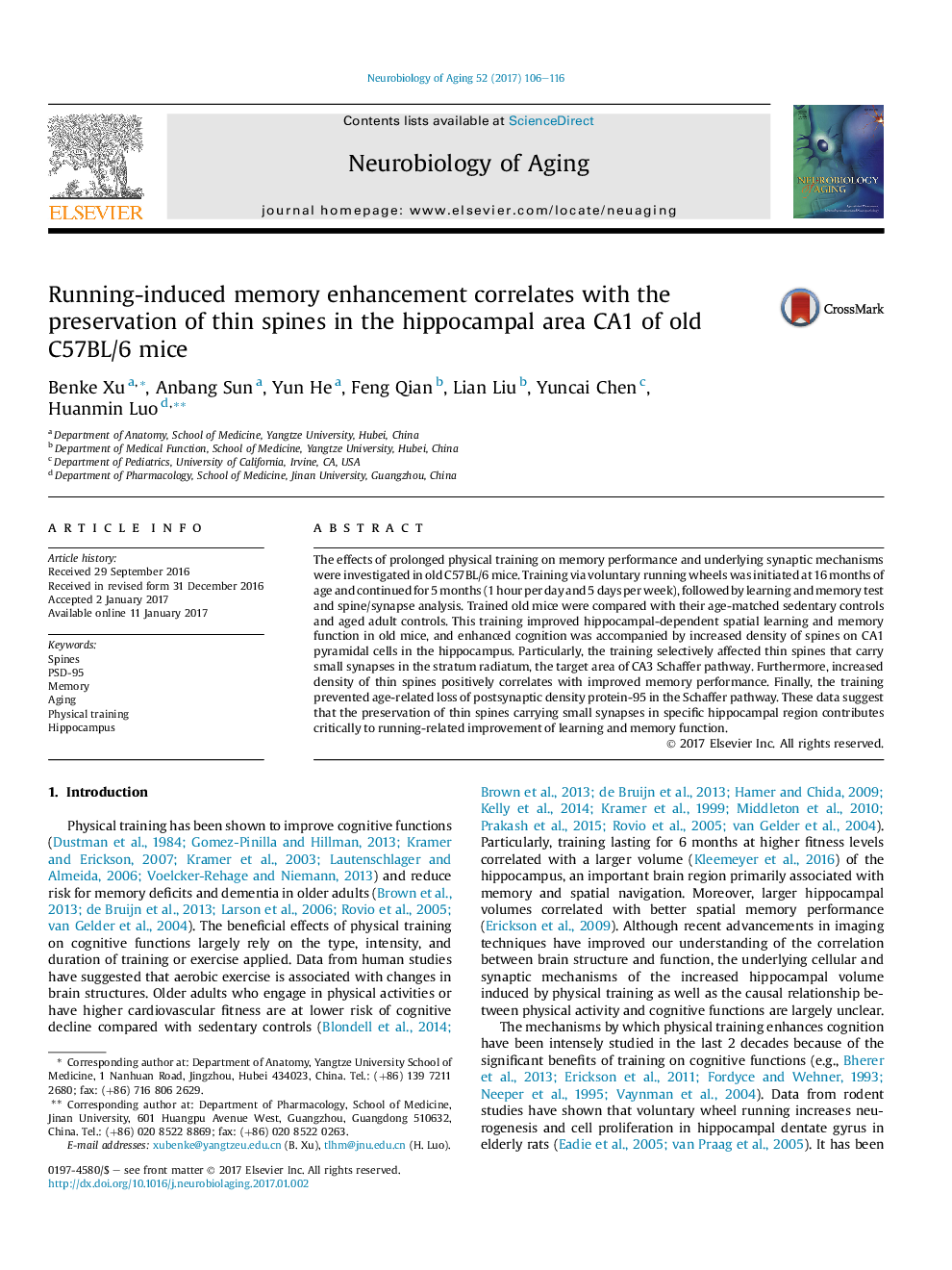| Article ID | Journal | Published Year | Pages | File Type |
|---|---|---|---|---|
| 4932751 | Neurobiology of Aging | 2017 | 11 Pages |
The effects of prolonged physical training on memory performance and underlying synaptic mechanisms were investigated in old C57BL/6 mice. Training via voluntary running wheels was initiated at 16Â months of age and continued for 5Â months (1Â hour per day and 5Â days per week), followed by learning and memory test and spine/synapse analysis. Trained old mice were compared with their age-matched sedentary controls and aged adult controls. This training improved hippocampal-dependent spatial learning and memory function in old mice, and enhanced cognition was accompanied by increased density of spines on CA1 pyramidal cells in the hippocampus. Particularly, the training selectively affected thin spines that carry small synapses in the stratum radiatum, the target area of CA3 Schaffer pathway. Furthermore, increased density of thin spines positively correlates with improved memory performance. Finally, the training prevented age-related loss of postsynaptic density protein-95 in the Schaffer pathway. These data suggest that the preservation of thin spines carrying small synapses in specific hippocampal region contributes critically to running-related improvement of learning and memory function.
